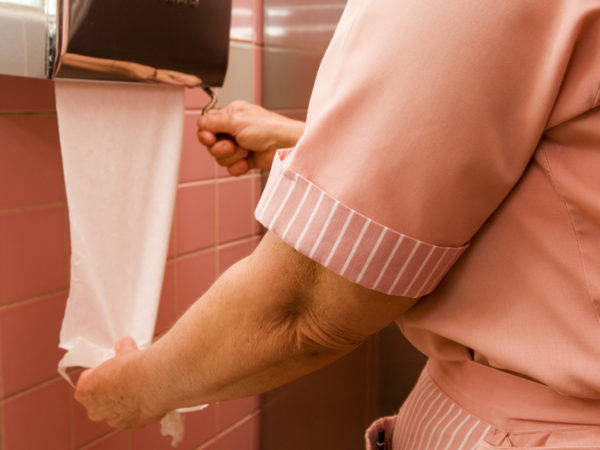Best Way to Get Hands Really Dry?
Is it best to dry your hands with paper towels or under those air blowers found in public washrooms? Is there a health advantage to one method over the other?
Andrew Weil, M.D. | December 19, 2014

This issue has been studied scientifically, and the latest word on the subject is that you you’re better off using paper towels than hot air blowers. A review from the Mayo Clinic published in 2012 looked at the findings from 12 studies on the subject published between January 1970 and March 2011, and concluded that paper towels are faster and more effective at drying hands.
That doesn’t mean air dryers don’t work at drying skin on hands. They do, the review authors noted. The problem is many people don’t have the patience to hold their hands under them long enough to get the hands really dry. This is important, since bacteria are more readily transferred from wet hands than from dry ones. In addition, the slightly abrasive action of paper towels likely plays a role in reducing the bacterial contamination of skin.
The researchers were also looking for evidence of which method of hand-drying is speediest, gets your hands really dry, and prevents cross-contamination. (They cite studies showing that air dryers can aerosolize bacteria from your hands and deposit them three to six feet away.)
The speed issue is the one that may have attracted your attention. The reviewers note that earlier studies have shown that you can get your hands 96 percent dry in 10 seconds using a cloth towel, while it takes hot air dryers 45 seconds to do a comparable job. A match-up of paper towels and jet air dryers (a newer type) showed that both methods can get hands 90 percent dry in 10 seconds, but the more familiar hot air dryers take 40 seconds to do the same job. Previous research showed that men spent an average of just 3.5 seconds drying their hands with cloth towels and 17 seconds under hot air dryers. Women spent slightly more time – 5.2 seconds – drying with cloth towels but only 13.3 seconds with their hands under air dryers. As normally used, hot air dryers leave men’s hands 55 percent dry and women’s 68 percent dry, while both cloth and paper towels leave your hands 90 percent dry in the same amount of time.
Another negative for the air dryers: using them can dehydrate the skin on your hands so that it becomes rough, red and so uncomfortably irritated that health care workers aren’t inclined to wash their hands as often or dry them as thoroughly as they should.
In addition, the noise made by air dryers is an annoyance that most people can do without. The review cited evidence showing that jet air dryers can make more noise than the sound of a heavy truck going by and the noise from two jet air dryers used at the same time could prove a risk to your hearing over time.
Andrew Weil, M.D.
Source:
Cunrul Huang et al, “The Hygienic Efficacy of Different Hand-Drying Methods: A Review of the Evidence,” Mayo Clinic Proceedings, August 2012
D.R. Patrick et al, “Residual moisture determines the level of touch-contact-associated bacterial transfer following hand washing.” Epidemiology and Infection, December 1997.









